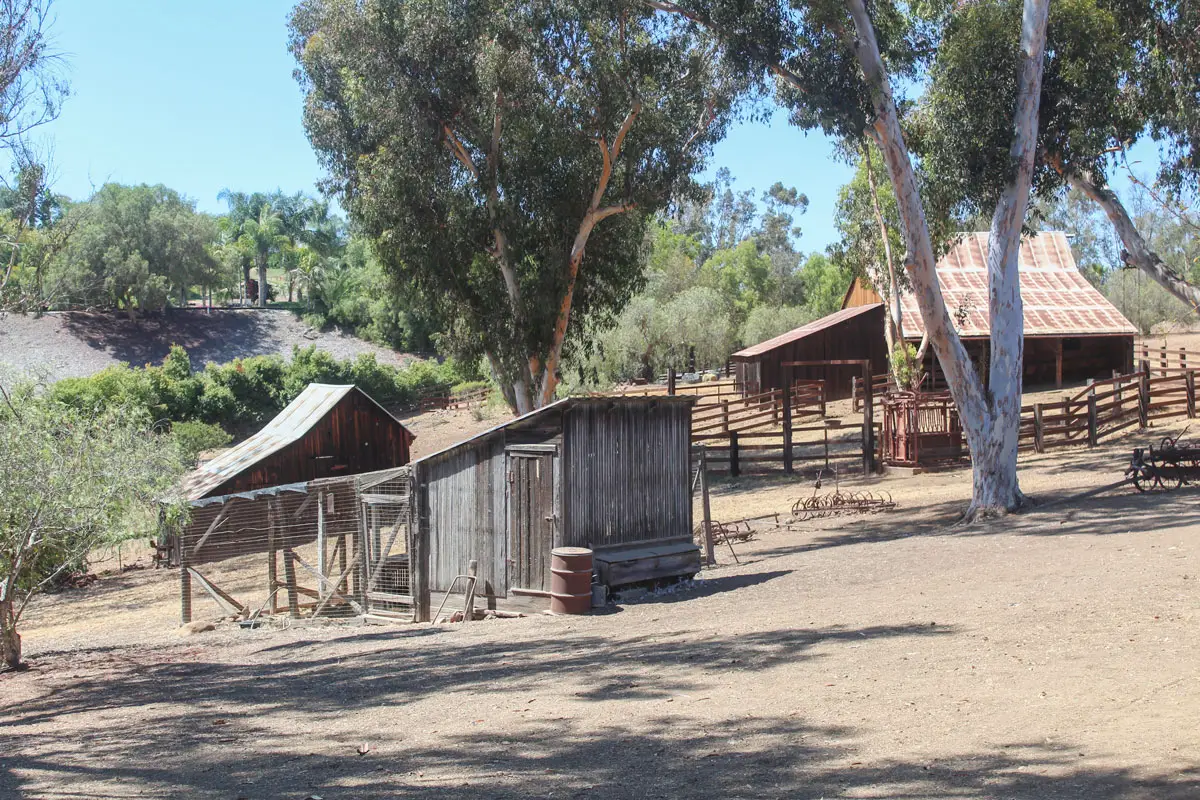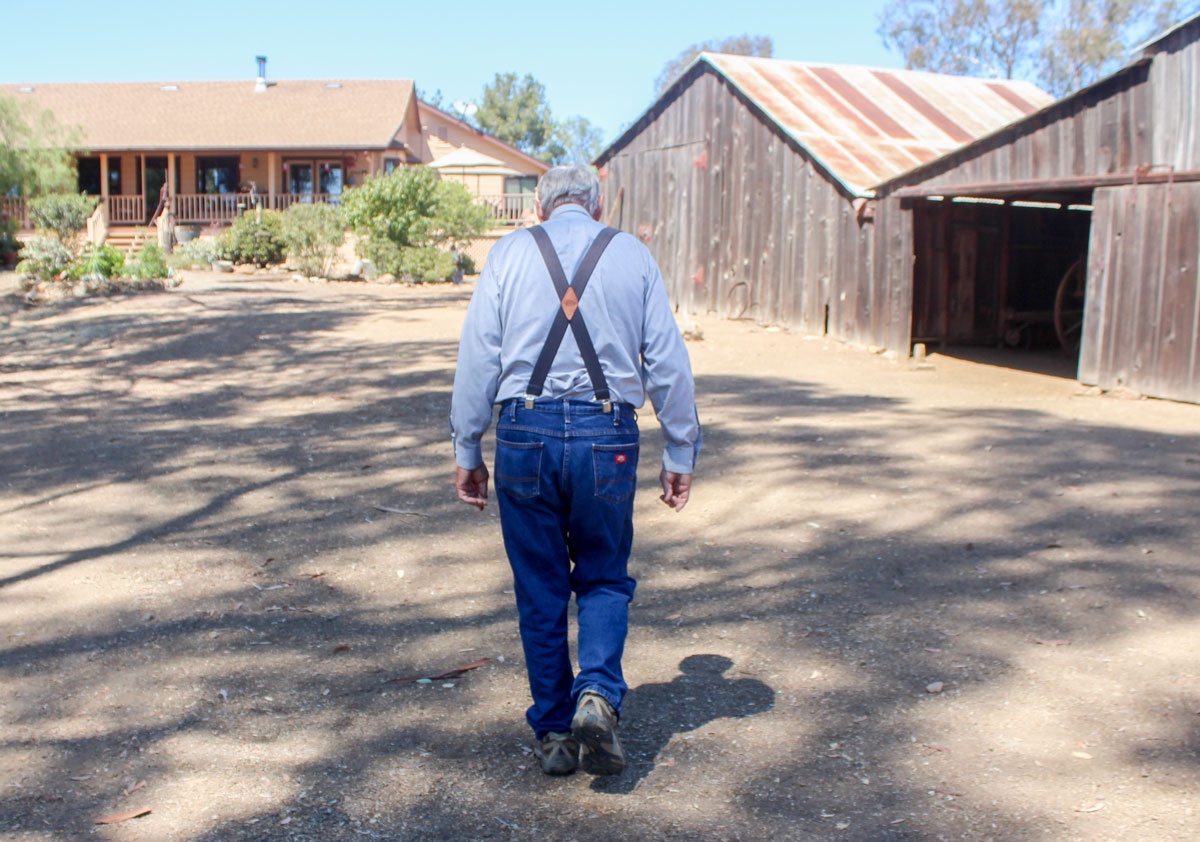“I have been the recipient of stories passed down by generations and now have become the storyteller to the next,” wrote Richard Bumann in his publication on the history of Bumann Ranch in Olivenhain. “If I am not successful, much of what happened will be lost.”
In July, a bronze plaque was finally installed to commemorate the ranch’s acceptance to the California Register of Historic Resources and National Register of Historic Places.
After a two-year delay, the family members celebrated during a reunion with the living members of Herman Friedrich and Emma Bumann.
As a child, Richard would help his father, George Theodore, tend to chores on the once 480-acre Bumann Ranch that once housed the German family and their dozen children.
Now, the grandson is the keeper of its stories and charged with preserving the family legacy.

History of Bumann Ranch
Richard and Adeline “Twink” Bumann moved onto the ranch in 1985, nearly a century after Herman F. Bumann arrived with the first German settlers of the Olivenhain Colony.
Herman Freidrich was born in Groszgarz, Germany, in 1862 to a family of tailors. When he was 21, H. Friedrich and his father immigrated to America, following an uncle who had settled in Denver 12 years prior. The father-son duo would soon find, just two blocks away from the Larimer Street tailor shop at which they were employed, that German nationals were forming a colony with eyes set on Southern California.
The colonists purchased 4,431 acres of a former Mexican ranch, Rancho Las Encinitas. Each person was entitled to a small portion of land, and all had invested life savings into land they had never seen.
H. Friedrich and his father were in the first group of colonists to arrive in late 1884. The shelter was inadequate, consisting of several adobe structures — known today as Stagecoach Community Park – but there was opportunity.

In March 1885, H. Friedrich acquired the first five acres of land near Escondido creek. However, quickly, the settlers became uneasy following serious accusations from community leaders regarding the commission of land sales. (These troubles in the community led to an 80% decline of the 300-person colony by 1887.)
H. Friedrich, though, smartly leveraged the rush out of Olivenhain – and on good advice — purchased a former Olivenhain Colony officer’s homestead for $50 as he was attempting to flee the turmoil.
By mid-1885, H. Friedrich owned 160 acres and continued to acquire land from neighboring homesteads until the 1920s, eventually totaling 480 acres.
In 1893, H. Friedrich, now a well-established rancher, found his Emma Marie Junker. By 1914, the couple had 12 children to help them work the crop fields and tend to animals.
Tribute to Herman Charles
Visitors could feel obtrusive, walking through the one-bedroom house that once was the family home.
The self-written composition Herman Charles intended for his violin — stored amongst his collection of phonographs — still sits propped in the corner of the 110-year-old living room on Bumann Ranch. A photo of H. Charles, the Bumann’s seventh child and second son, playing alongside Bing Crosby in a pick-up band hangs on the wall above the sheet music.
The acreage H. Friedrich worked to acquire over several decades was parceled to the children after his death in 1926, followed by Emma, 10 years and 10 days later.

One child would acquire the series of barns built from 1886 until the last structure was erected in 1911. H. Charles later acquired 120 acres from his siblings in addition to his 40-acre inheritance. By the 1930s, H. Charles was alone in working the family’s land.
His shoes, one pair plus an extra, still sit under bureaus of his personals and just in front of his hanging overalls. Just as his uniform sits, the stalls and nametags of four workhorses await them in the old barn. Prince, a 30-year-old gelding, last worked the fields in the 1970s.
H. Charles’ dutiful husbandry, as evidenced by the condition of the ranch, would help the unanimous recommendation and 2020 acceptance to the National Register of Historic Places.
In years when Olivenhain mainly supported agriculture, termites were the bane of barns, sheds and other structures.
“As time went on, they just fell,” Richard said of the wooden buildings. “One day, they were there, and the next day, gone.”

But not at Bumann Ranch, which Richard credits to his uncle.
“He began to spray diesel, and the termites kept out of the wood,” Richard explained of his uncle’s decisions as an early rancher.
H. Charles was born in 1905 and died in 1994. But according to Richard, in the 1930s, his interest in technology “just kinda stopped,” and “he continued living in the 1930s for the rest of his life.”
Or so, in his way.
The farming equipment purchased by H. Charles — one of two children from the “Bumann dozen” who never had running water nor electricity — still helps the current Bumann inhabitants tend to the land.
Driving up the private roadway in the old Encinitas neighborhood could be the closest avenue resembling a time warp. Richard and Adeline’s modern home overlooks 20 original buildings, pristinely preserved, on the remaining 10 acres of Bumann Ranch.
Today, Richard directs a tractor purchased in 1990. Adeline uses a century-old hay cutter, much of which will help feed their cow.

Richard, who took care of his father’s older brother until he died in 1994, has overseen the ranch alongside his wife since 1985, but he knew far earlier that his family had something special.
In the 1970s, Richard began a history project that is now the published history of the Bumann Ranch with H. Charles as his primary source.
In 2016, Richard and Adeline, the fourth Bumanns family to live on the property, felt the ranch deserved lasting preservation.
The hillside property is a moment in time. While the future of the Olivenhain landmark is something that will be sorted between the family, its history runs deep in the community and across the county.



